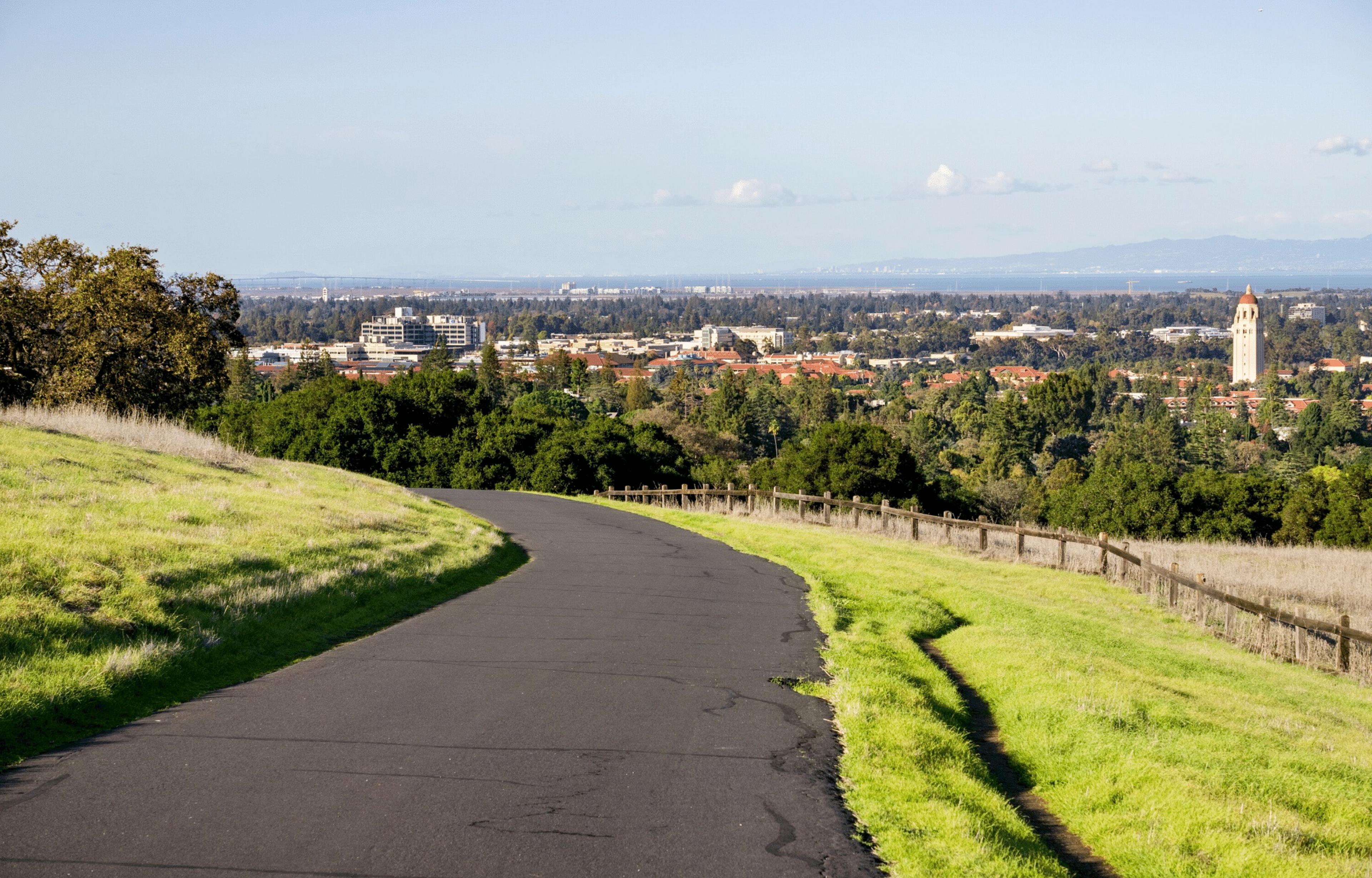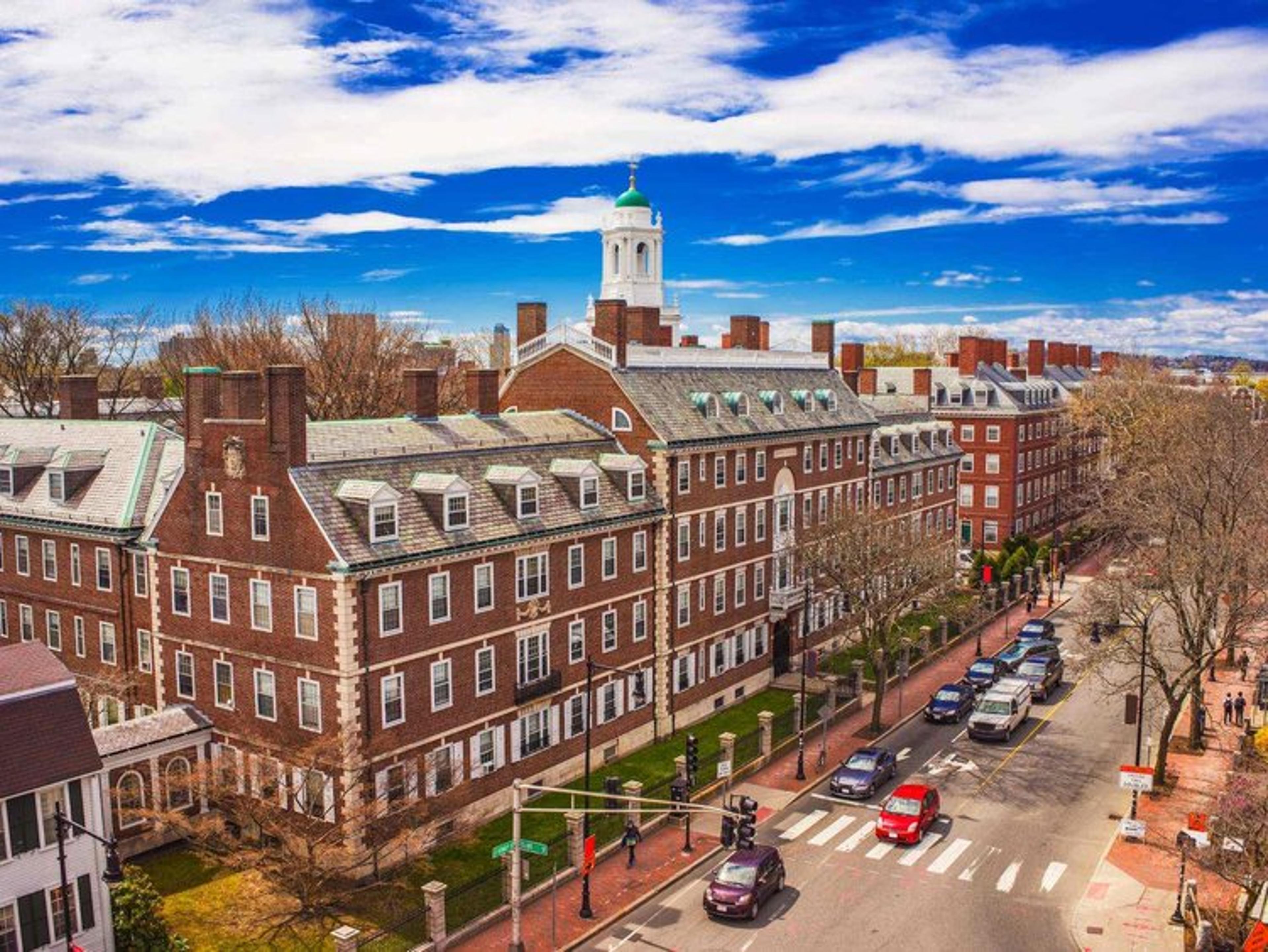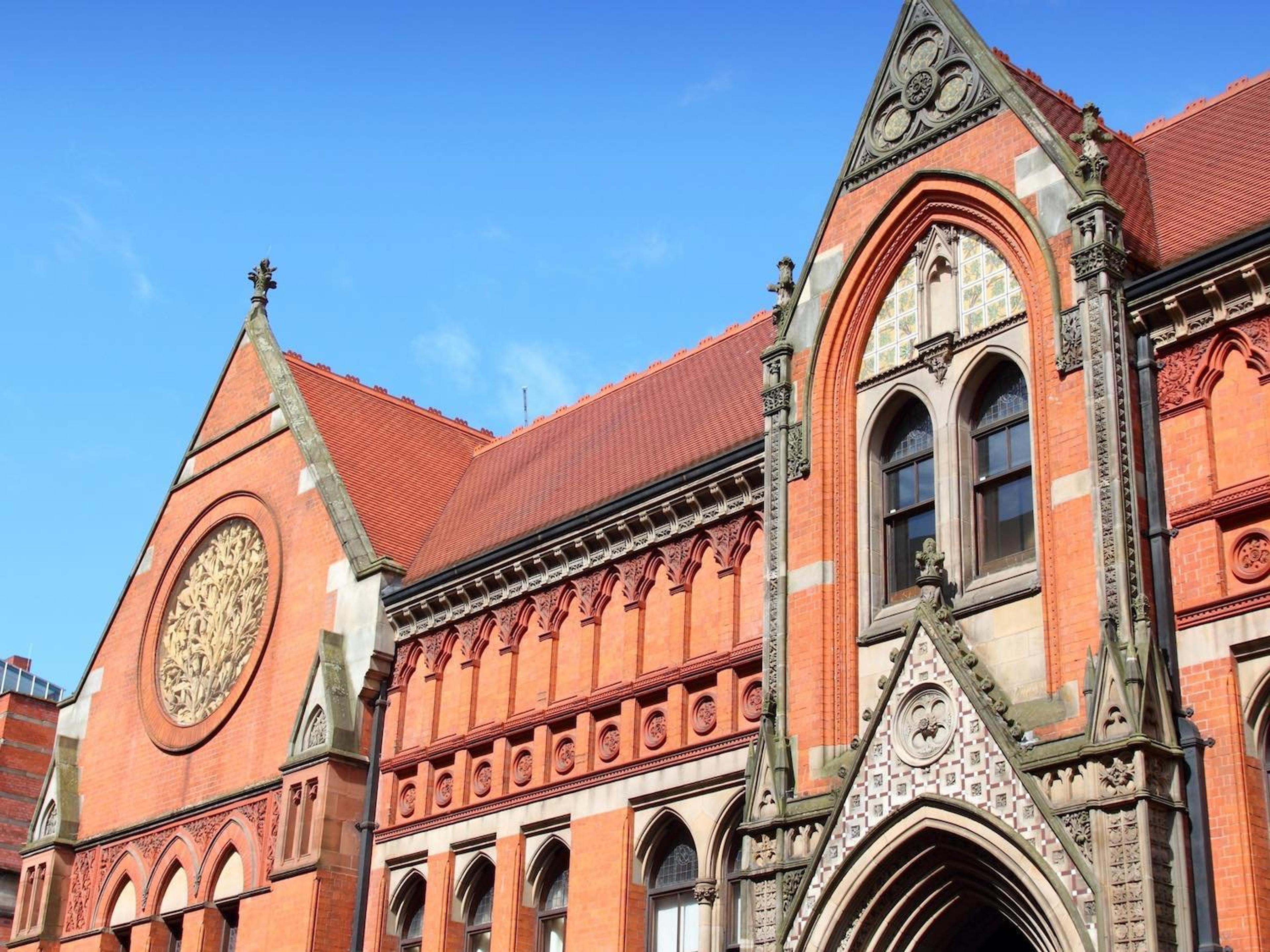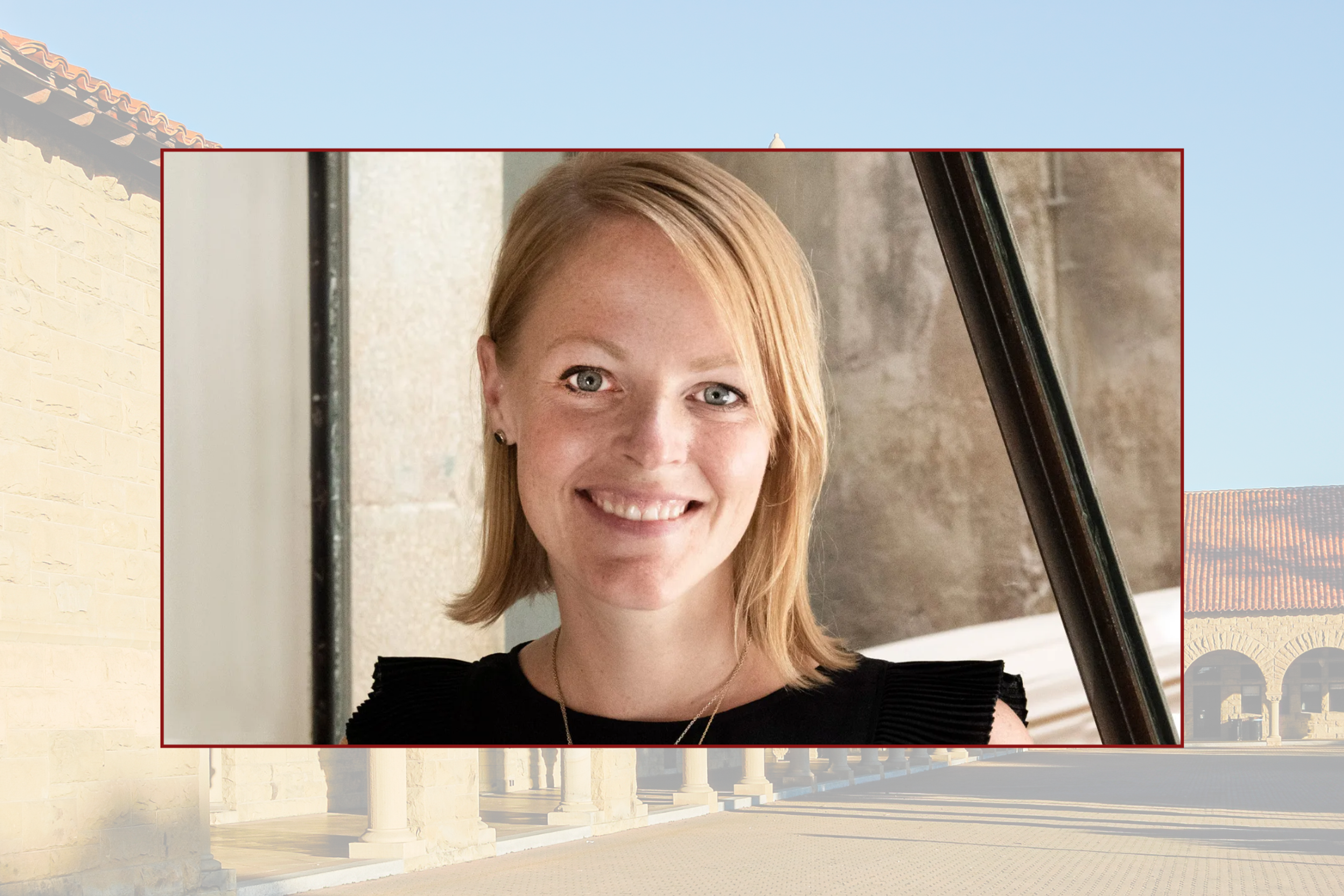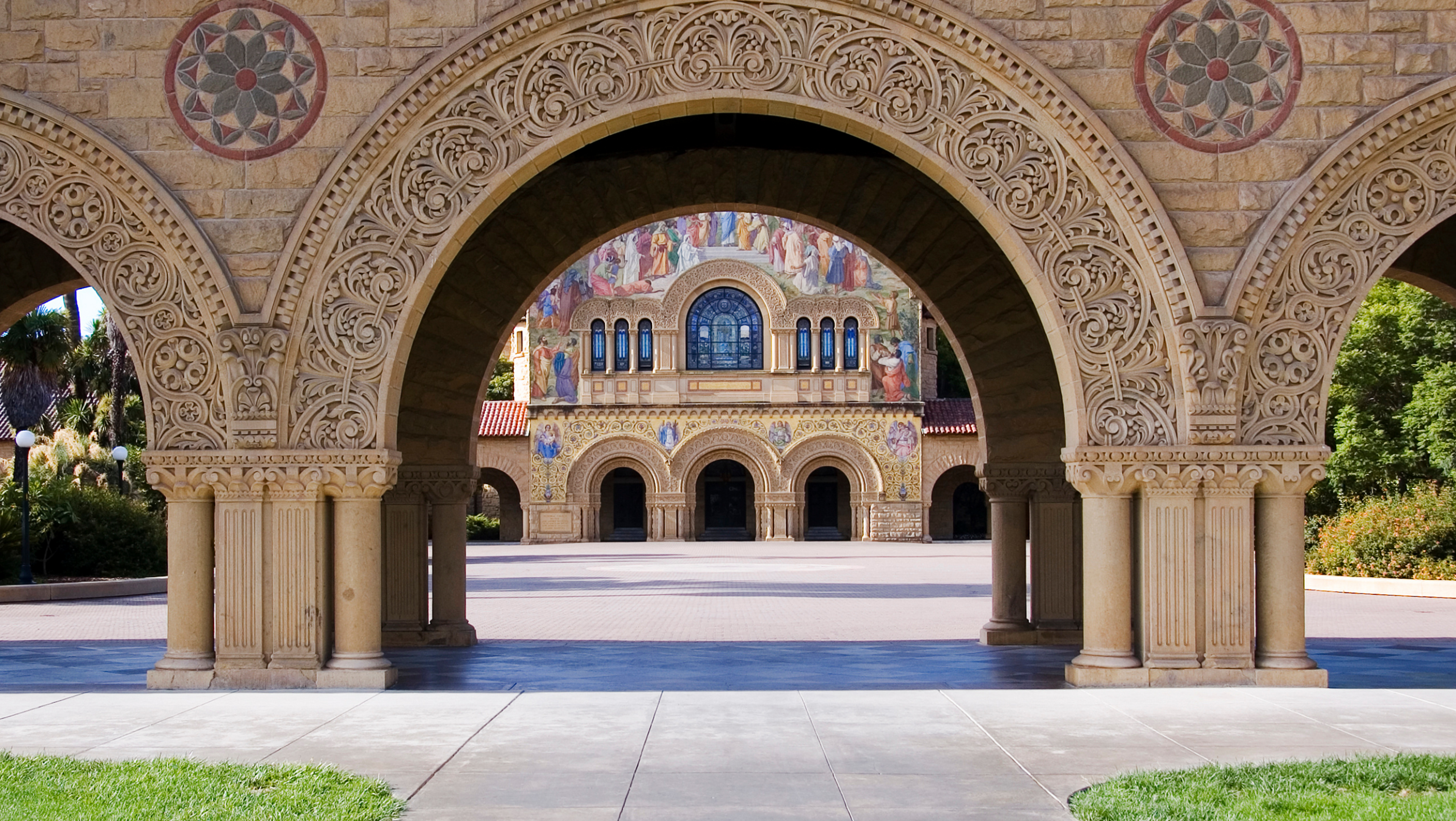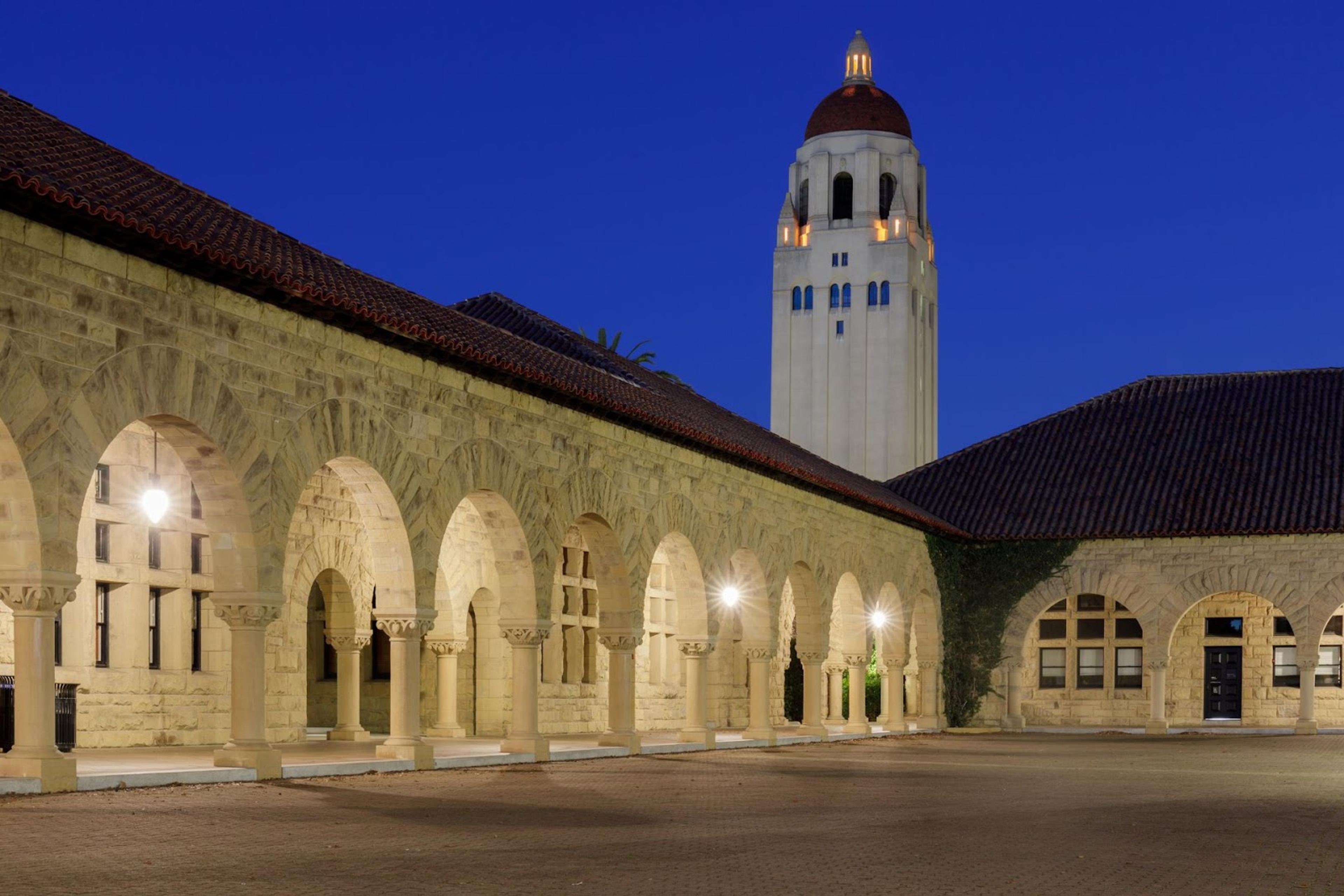GSB vs HBS: How to Choose Between Stanford and Harvard for Your MBA
GSB vs HBS — compare culture, career outcomes, curriculum, and fit to choose the right MBA for you. Real insights from admits, not just rankings.
By Timothy F.
Former Ad Comm | 150+ M7 Admits | Ranked top 4 firm on Poets & Quants 2025
Posted July 23, 2025
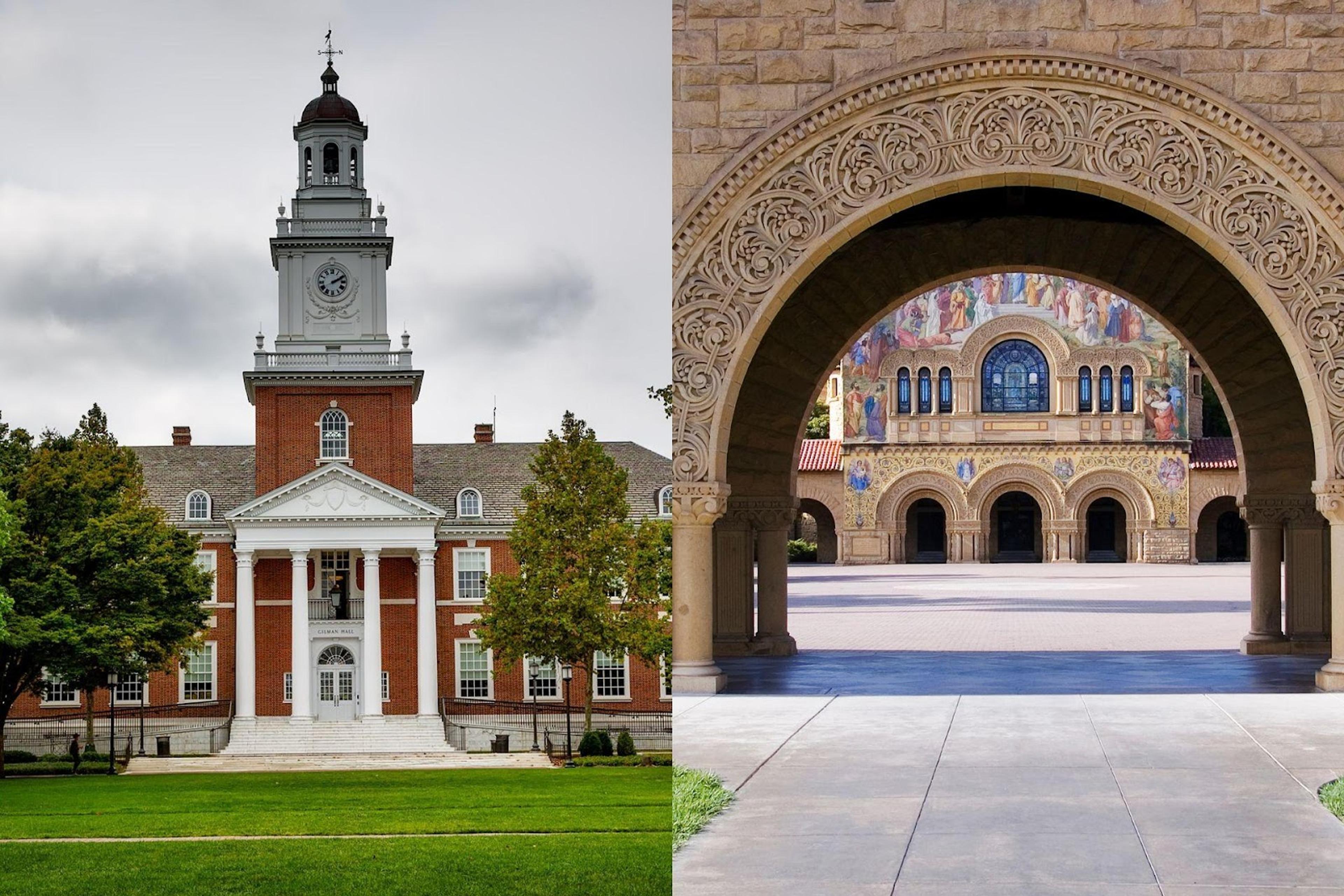
Table of Contents
Free Event

Featuring Horatiu S.
Profile Power: A LinkedIn Profile That Gets You In
Starting Tuesday, September 2
11:00 PM UTC · 45 minutes

Featuring Horatiu S.
When choosing between Stanford GSB and Harvard Business School, you're not just picking a campus, you’re choosing a lifestyle, a network, and a launchpad for your career. While both are considered top business schools, the right fit depends on your personal goals, learning style, and values. This guide compares everything from class culture to career outcomes, giving you the inside scoop, including real advice from MBA admits who chose between the two.
I have helped 150+ MBA applicants navigate the applications and get into every M7 program. Choosing the schools to apply to, and ultimately attend, is one of the most important decisions you make in your journey to business school. For candidates that get into both the GSB and HBS, the decision comes down not to which program is best, but for which program is best for you. I hope this guide helps you understand everything you need to know to make that decision. For personalized advice, feel free to reach out to me directly.
Read: MBA Requirements: What You Need to Apply (and What Top Programs Really Look For)
Harvard Business School vs Stanford GSB at a Glance
Choosing between Harvard Business School (HBS) and the Stanford Graduate School of Business (GSB) can feel like splitting hairs, as both are elite, produce powerhouse leaders, and are at the top of global MBA rankings. But when you look under the hood, differences in size, setting, teaching style, and industry placement emerge.
This side-by-side table gives you a quick, factual breakdown of how the two top business schools compare, from class size to average salary and more. It’s a great place to start if you're narrowing down which MBA degree program might fit you best.
| Feature | Harvard Business School (HBS) | Stanford Graduate School of Business (GSB) |
|---|---|---|
| Class Size | 930 students | 424 students |
| Acceptance Rate | ~9-12% | ~6-8% |
| Location | Boston, Massachusetts | Palo Alto, CA |
| Teaching Method | Case Method | Experiential learning with emphasis on navigating ambiguous contexts |
| Average GMAT Score | 740 (Median) | 738 (Average) |
| GMAT Score Range | 540–790 | 630–790 |
| Average GPA | 3.69 | 3.77 |
| Average Work Experience | 5 years | 5.1 years |
| International Students | 35% | 39% |
| Top Pre-MBA Industries | Consulting (17%), Private Equity/Venture Capital (17%), Technology (13%) | Investment Management/Private Equity/Venture Capital (19%), Consulting (17%), Technology (13%) |
| Median Base Salary | $175,000 | $189,000 |
| Median Signing Bonus | $30,000 | $30,000 |
| Alumni Network | Extensive global reach, particularly strong in the East Coast and finance sectors | Deep connections in Silicon Valley and the technology/startup ecosystem |
| Program Format | 2-year full-time MBA program | 2-year full-time MBA program |
| Tuition (Annual) | $76,410 | $82,455 |
Culture & Learning Environment
Teaching Style: Case Method vs. Experiential Learning
At Harvard Business School, the legendary case method is the heartbeat of the classroom. Every class puts students in the driver’s seat of a real business decision. You’ll be cold-called, challenged by peers, and expected to speak with confidence. You’re graded on the quality of your insight and the effectiveness of your delivery. It’s fast-paced and intense, but if you thrive under pressure and love thinking on your feet, this environment will sharpen your instincts like no other.
At Stanford GSB, things feel different, more reflective. The school leans into experiential learning and navigating ambiguous contexts, where there isn’t always a clear right answer. It’s not about being the most vocal in the room; it’s about wrestling with big questions and showing vulnerability. One Reddit admit put it well: “At GSB, I felt like I could take off the armor and really think about who I wanted to become.”
Class Size & Personality Fit
One of the biggest contrasts between HBS and GSB is scale. HBS enrolls nearly 930 MBA students each year, more than double Stanford’s ~420. That means a broader range of backgrounds and viewpoints, but also a naturally more structured and less personal experience.
GSB’s smaller size creates a tight-knit, intimate setting. Students often describe the GSB culture as “emotionally safe” and even “therapeutic.” It’s the kind of place where you might go deep over coffee with classmates, sharing career dreams or life pivots. HBS, on the other hand, has a vibe that’s polished, competitive, and filled with people who already move like leaders. That doesn’t mean you can’t be vulnerable, but the tone of the community is different.
In summary, if you want structure, speed, and scale, Harvard HBS might feel like home. If you’re craving intimacy, self-discovery, and space to reflect, Stanford GSB might be your place.
Career Outcomes & Recruiting
Both HBS and GSB open doors to top firms, but where those doors lead can differ. Let’s break down where grads from each program go right after graduation.
Top Industries and Roles by School
| Industry | HBS | GSB |
|---|---|---|
| Consulting | 18% of grads, Median Salary: $190,000 | 15% of grads, Median Salary: $192,000 |
| Private Equity | 19% of grads, Median Salary: $180,000 | 18% of grads, Median Salary: $215,000 |
| Venture Capital | ~5% of grads, Median Salary: $178,000 | 13% of grads, Median Salary: $180,000 |
| Investment Banking | 5% of grads, Median Salary: $175,000 | ~1% of grads (not a primary focus) |
| Technology | 16% of grads, Median Salary: $165,000 | 24% of grads, Median Salary: $177,500 |
| Entrepreneurship | ~14% start a company post-MBA | 25% start a company post-MBA |
| Healthcare | 6% | 4% |
| Consumer Products | 3% | 3% |
| Energy | 3% | 3% |
| Government/Nonprofit | 5% | 1% |
HBS graduates often go into traditional leadership roles across industries. Firms like Morgan Stanley and McKinsey actively recruit on campus. GSB grads are frequently seen spearheading initiatives in emerging tech or launching startups.
Where Grads Go
HBS graduates often head into traditional leadership roles at major firms like McKinsey, BCG, Bain, and Morgan Stanley. The program’s structure and analytical aptitude focus make it especially attractive for roles in consulting, investment banking, and general management.
GSB grads, on the other hand, tend to lean into tech and entrepreneurship. With its deep connections to Silicon Valley, GSB is a natural launchpad for roles in product management, venture capital, and startup leadership. GSB also has a higher rate of students launching businesses right after graduation, and many GSB alumni later scale these companies into impactful ventures.
As one applicant said, “At HBS, the recruiting machine is incredibly polished. At GSB, it felt like I had the space to explore and create something new.”
ROI and Long-Term Trajectory
Both programs offer an incredible return on investment, but again, in different ways.
- HBS prepares you for long-term leadership in established organizations. It builds breadth, confidence, and connections that translate into power in industries like finance, healthcare, and government. Many HBS graduates ascend to C-suite roles in Fortune 500s, PE firms, and Ivy-adjacent institutions.
- GSB, meanwhile, is unmatched for those looking to build or invest in the future. From unicorn founders to VC partners, GSB graduates are everywhere in innovation. The smaller cohort and open curriculum foster deep relationships and a flexible career path that supports reinvention over decades.
If you’re comparing pure salary, both HBS and GSB are neck and neck. But if you’re thinking about career ownership, impact, or your third pivot down the line, GSB may offer more room to color outside the lines.
Curriculum & Academic Focus
Leadership, Innovation, and Entrepreneurship
Stanford GSB places leadership at the center of its curriculum, not just through titles or roles, but through self-awareness, values, and interpersonal skill-building. Courses like their famed “touchy feely” (a distinct approach to Interpersonal Dynamics) and Leadership Labs help students understand how they show up in a room, how to give and receive feedback, and how to lead through influence rather than authority. It’s deeply personal and intentional.
When it comes to innovation and entrepreneurship, GSB is in a league of its own. Thanks to its proximity to Silicon Valley and a strong network of alumni in tech and venture capital, students have access to cutting-edge ideas and mentorship from founders and investors. One in four students launches a company either during or shortly after the program, supported by resources like the Center for Entrepreneurial Studies and the Startup Garage.
Harvard Business School, meanwhile, focuses on building leadership through rigorous decision-making. The case method demands that HBS students take a stand on real-world dilemmas and defend it in front of 90 classmates, every single day. This builds clarity, courage, and confidence under pressure. While it may not seem as introspective as Stanford’s model, it produces leaders who can thrive in high-stakes environments and challenging problems.
HBS also supports entrepreneurship through the Rock Center for Entrepreneurship, the i-Lab, and a robust set of startup-focused electives. Though its startup scene isn’t as dominant as GSB’s, the resources are still strong, especially in private equity-adjacent innovation, and ~50% of HBS alumni launch a venture at some point in their career.
Electives, Flexibility, and Global Options
Here’s where GSB shines. With just a handful of required courses, GSB students can dive into electives early, choosing from tracks in social innovation, AI, scaling startups, and more. The flexibility allows students to shape their journey around their interests, whether that’s independent business, global development, or deep tech.
GSB’s global options are also a standout: the Global Management Immersion Experience (GMIX), Stanford Tsinghua Exchange Program, and Global Study Trips all offer real-world exposure in international markets. These aren’t just sightseeing trips; students work with global organizations and tackle real business challenges.
HBS, in contrast, is more structured, especially in the first year, where all students go through the same ten-course Required Curriculum. While this fosters shared context and strong peer learning, the real exploration begins in the second year with over 100 electives. Students can dive into electives ranging from healthcare innovation to behavioral economics, or pursue global options like the FIELD Global Immersion, a hands-on experience working with international companies.
If you prefer to build your own path and learn by doing, GSB might feel more natural. If you thrive on structure and want to develop depth through a proven framework, Harvard’s MBA program delivers.
Alumni Network & Brand Power
When it comes to brand recognition and alumni reach, both HBS and GSB carry immense weight, but they offer different kinds of power depending on your goals.
Harvard Business School: Global Scale, Deep Industry Reach
Harvard Business School has arguably the most influential alumni network of any graduate institution, not just among business schools, but across higher education globally. With over 47,000 living HBS alumni, you’ll find HBS alumni leading Fortune 500 companies, shaping public policy, running international NGOs, and investing from Wall Street to Nairobi. If you're targeting international students or want access to high-level networks across regions and industries, Harvard’s network is tough to beat.
The scale isn’t just about numbers; it’s also about depth. Whether you’re entering private equity, government, or corporate leadership, chances are there’s an HBS grad already at the table, and willing to take your call.
Stanford GSB: High-Impact, Innovation-Centric Connections
What Stanford GSB lacks in size, it more than makes up for in targeted courses and influence. The GSB alumni community is particularly strong in tech, venture capital, and early-stage innovation. If you want to become a founder, join a rocket-ship startup, or invest in the next venture acquired by Google, GSB alumni can provide warm intros and mentorship in ways few networks can match.
GSB also benefits from being embedded in the broader Stanford ecosystem, including the engineering school, design school, and medical school, offering cross-pollination opportunities that are perfect for prepared students working at the edge of tech and business.
A GSB applicant summed it up well: “Harvard is global power. Stanford is focused power.”
In short:
- Want to tap into a massive, multi-industry global network? Go with HBS.
- Want tight-knit support to build the next unicorn or break into VC? GSB might be the better launchpad.
Both networks are elite, but the right alumni base depends on where you’re heading.
Application Differences
Essay Prompts and Interview Style
For the 2024–2025 cycle, Harvard Business School has moved away from its famously open-ended essay. Instead, HBS now asks three short essays, each with a clear focus:
- Business-Minded (300 words): What drives your career choices and impact?
- Leadership-Focused (250 words): How do you invest in others and grow as a leader?
- Growth-Oriented (250 words): Where has your curiosity pushed you to grow?
This new structure gives applicants a chance to highlight key traits like past actions, leadership potential, and personal evolution, but in a more guided way than before. It’s still about clarity and confidence, but now with more prompts to help shape your narrative.
Read: Harvard Business School MBA Essay: 5 Things to Do
In contrast, Stanford GSB asks a very different question:
This is where Stanford’s culture of introspection comes through. The admissions committee wants to understand what drives you on a personal level, not just what you’ve done, but why you did it. This essay calls for emotional honesty, reflection, and the ability to articulate purpose. The best responses don’t read like resumes; they read like origin stories.
As for the interview process:
- HBS interviews are conducted by admissions staff and are highly structured and resume-based. Expect deep dives into your background, decisions, and career goals, plus follow-ups to test your clarity and analytical thinking.
- GSB interviews are run by trained alumni and are behavioral and conversational. You’ll be asked about times you’ve shown resilience, collaboration, or leadership in often ambiguous contexts — and how you handled them.
Read: How to Ace Your MBA Interview: With Prep Questions & Answers and 6 Expert Tips for Nailing Your Virtual MBA Interview.
What They’re Really Looking For
While both HBS and GSB seek outstanding leaders, what that means in practice varies:
- HBS values candidates who show impact, clarity, and analytical aptitude. They want people who are polished, prepared, and have already delivered meaningful results, people they believe will thrive in high-stakes environments and influence large systems.
- GSB, on the other hand, looks for depth, vision, and self-awareness. They want students who are not only capable of leadership but also capable of reinventing leadership in their own voice, in many forms, not just traditional ones.
If you shine in structure and clarity, HBS may be your zone. If you thrive on authenticity and purpose-driven thinking, Stanford GSB could be a better fit.
When One School Might Be a Better Fit
You might thrive at HBS if…
- You want to grow in structured, high-stakes settings that push your decision-making under pressure.
- You enjoy fast-paced, case-driven discussions grounded in real business dilemmas.
- You value scale, a larger MBA class and a vast, global network across industries.
- You’re targeting careers in consulting, private equity, or Ivy League-adjacent sectors like investment banking or public leadership.
- You prefer clear frameworks and want to sharpen your analytical aptitude in a polished, competitive environment.
- You thrive in environments where past actions and demonstrated impact are highly valued by peers and recruiters.
- You’re interested in becoming a generalist first, with options to specialize in year two through targeted electives.
- You want to join a brand that opens doors in legacy industries like finance, healthcare, and government worldwide.
You Might Thrive at GSB If:
- You’re a founder, creative, or non-traditional thinker who wants to invent rather than follow.
- You value intimacy and emotional depth in your classroom experience, and want to be surrounded by peers exploring their purpose.
- You’re drawn to Silicon Valley, innovation ecosystems, and exposing students to global entrepreneurship.
- You’re excited by the freedom to customize your MBA journey from the start, with fewer required courses and greater flexibility.
- You want to be part of a deeply engaged community citizenship culture that blends business with personal growth.
- You see leadership as coming in many forms, and you’re curious about who you’ll become, not just what you’ll do.
- You’re looking to build a future in venture capital, product management, or your own startup.
- You want to surround yourself with diverse perspectives, prepared students, and faculty that push boundaries in tech, design, and ethics.
Advice From an MBA Admissions Coach
If there is one thing I can tell you from the hundreds of MBA hopefuls that I’ve worked with, it’s that you should trust the application process to help drive clarity. Countless times, I begin working with a client who is deeply interested in both HBS and the GSB and when they are admitted to both, I am surprised to hear that their preference has become crystal clear to them. Alignment with these programs often comes as we traverse the admissions process together. While much of what these schools are looking for is the same, there are some key differences. A successful application to HBS will demand thoughtfulness about your career goals, the impact you aspire to have, what type of leader you are, and what leadership growth you seek. In contrast, a successful application to the GSB will require clear moonshot career goals, strong awareness of, and alignment with, the GSB program offerings, a deep and reflective understanding of your motivations, and a propensity for calculated risk taking. For many clients, the very act fully addressing these different components forces a self-selection process that elevates one clearly above the other.
The Bottom Line & How to Make the Decision
If you’re still deciding between GSB vs HBS, know that there’s no one-size-fits-all answer. These are two of the best and most competitive MBA programs in the world, but the right choice comes down to you. Ask yourself: Where will I be challenged and supported? Which school’s vibe matches who I am now, and who I want to become? Do I want structure or freedom? Scale or intimacy? Reflection or acceleration?
Both schools will open their doors. Both will surround you with brilliant people. But one of them will bring out the best version of you – and that’s the only decision that matters.
In the hundreds of applications that I've reviewed, as both a coach and former AdCom, I not only understand the importance of telling a powerful story as part of your application process, but can also help you learn to tell yours. Book a free intro call with me, and let’s get started!
Read these next:
- Harvard Business School Tuition & Fees Breakdown
- Stanford GSB: MBA Tuition & Fees Breakdown
- The HBS Waitlist Strategy
- The GSB MBA Waitlist Strategy
- The 10 Best MBA Admissions Consultants
FAQs: GSB vs HBS
Does Stanford GSB have a grade non-disclosure policy, and how does it affect students?
- Yes, Stanford GSB has a grade non-disclosure policy, meaning students are not required to share their grades with recruiters. This policy fosters a collaborative environment, reducing competition among students. In contrast, HBS does not have such a policy, and grades can be disclosed to potential employers.
Can students cross-register for courses at other schools?
- At HBS, students can cross-register for courses at other Harvard schools and MIT, providing a broad range of academic opportunities. GSB students can take courses across Stanford University, including the engineering and law schools, allowing for interdisciplinary learning.
How do the schools' locations influence the MBA experience?
- HBS is located in Boston, a hub for finance, consulting, and healthcare industries, offering proximity to East Coast business centers. GSB is situated in Silicon Valley, providing direct access to the tech industry, startups, and venture capital firms.
What are the differences in the application essay prompts?
- HBS's essay prompt is open-ended, asking applicants to share what else they would like the admissions committee to know. GSB's prompt, "What matters most to you, and why?" seeks deep personal reflection, encouraging applicants to share their core values and motivations.
Written by Timothy
5.0
(98)
I have helped many applicants successfully gain admission to top MBA programs both in the US and in Europe. I worked as an admissions fellow at Chicago Booth. In this role, I interviewed and reviewed the application details of almost 100 applicants across multiple quarters. I understand how to craft a dynamic story that will jump off the page for Ad Comms. Before pursuing an MBA, I started my career at Goldman Sachs, supporting prime brokerage clients with cash and security instruction and settlement. I am currently a project leader at Boston Consulting Group, advising clients mostly in the Gen AI, enterprise transformation, and org design practice areas. At BCG, I have supported clients with pricing strategy, org design, labor optimization, technology integration, and market analysis projects. I am a client service expert and can share valuable insight into how to successfully recruit and be successful at a top-tier investment bank or consulting firm. I earned a B.S. in Economics and in Finance from Utah State University and an MBA with high distinction from The University of Chicago Booth School of Business, where I graduated as an Amy and Richard F. Wallman Scholar.
Timothy has helped clients get into organizations like:
Chicago Booth
Kellogg School of Management (Northwestern)
Columbia Business School
The Wharton School (UPenn)
Yale School of Management
